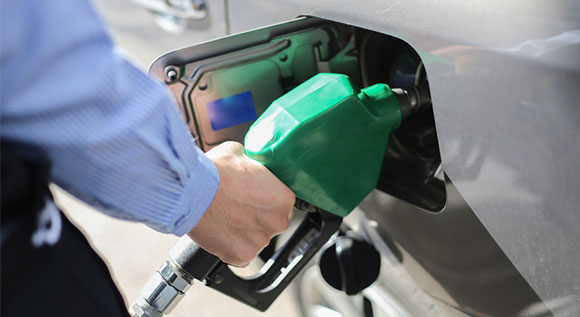Four per cent by 2020
Yes to mobility, no to carbon emissions. Apart from electric cars, gas-fuelled vehicles are are also becoming increasingly important for reaching this goal. By 2020, natural gas is to account for four per cent of the energy in the transport sector. To achieve this, the “Round Table on Gas-Based Mobility” has taken up its work.
 © fotolia.de / tobb8
© fotolia.de / tobb8
A fossil fuel is to help mitigate the climate change? This is possible - through the use of natural gas. Natural gas engines release less carbon emissions than comparable diesel or petrol engines. They do not release any particles and emit less nitrogen oxide, which results in less fine particulates in cities, amongst other benefits. In short: natural gas is a much friendlier fuel than petroleum, diesel & co. – both for people and for the climate.
In order to promote the use of natural gas as motor fuel, State Secretary Rainer Baake in the second week of September convened the “Round Table Gas-Based Mobility” at the Federal Ministry for Economic Affairs and Energy. As part of the Round Table, vehicle manufacturers, gas suppliers, service station operators, representatives of retail, fleet operators and the public sector will push to achieve progress in turning natural gas for automobiles into a mass market.
Focus regions throughout the country
“The aim of the Round Table Gas-Based Mobility is to enable the transport sector to achieve a share of four per cent in final energy consumption by 2020”, says State Secretary Rainer Baake. “We set this target together with the automotive industry during the sectoral dialogue at the end of 2015. The Federal Government will soon adopt the extension of the tax concession on gas as a motor fuel. We are thus creating robust economic policy frameworks in order to include gas-based mobility as an integral part of the energy transition in the transport sector. Now it is essential that the market players agree on specific measures to significantly drive gas-based mobility forward.
In order to set out how the the four per cent target is to be achieved, the participants aim to submit a package of measures by the end of January. Step one: Specific areas all around the country will need to be designated as focus regions in which gas-fuelled vehicles are to be used and the infrastructure can be expanded quickly.
Right of way for the energy transition
The transport sector is especially important for the energy transition. And this is why: for more than ten years, carbon emissions in the sector have no longer been declining – they’ve been rising. And this is the case even though fuel consumption by motor vehicles continues to fall. An increasing use of electric cars is to ensure less carbon emissions on the road. This is also backed by the Federal Government. One example for this is the purchase grant for electric vehicles, which has now been available for a few months (more information here).
Multiple pathways to one goal
Gas-based mobility is one of several different pathways being taken towards achieving a low carbon transport sector. Currently, just under 100,000 gas-fuelled vehicles with CNG propulsion (compressed natural gas) can be found on Germany’s roads. Liquefied natural gas (LNG) has now found a new use in heavy-duty vehicles to transport heavy loads from A to B by water as well as by road in a cleaner way. (More information can be found here). In Germany, natural gas is also used in heating and cooking. It can also help to store energy.

